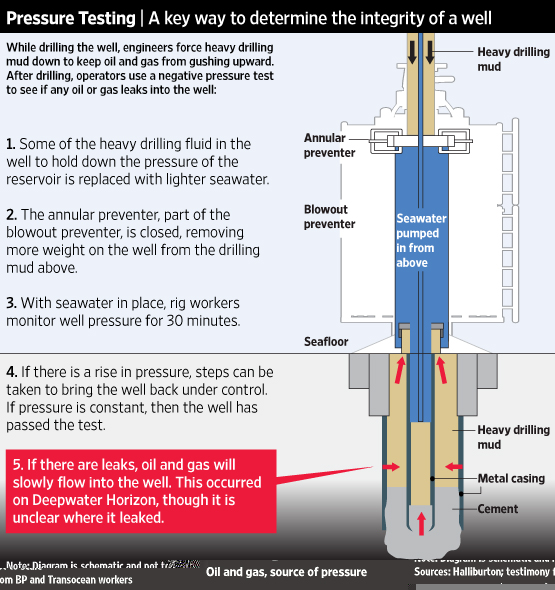The Wall Street Journal compiled a great article on the doomed rig’s last day and the divisive change of plans to use less drilling mud. Definitely worth the read. Read the full article here
According to the investigation by the Journal many of the senior rig managers of BP and Transocean were focused on a tour of VIP executives. This distraction and the confusing pressure readings from the well led to the situation rapidly deteriorating out of control.
Again, the BP’s decision to remove the heavy drilling mud is brought into question:
Normally, workers on the rig remove about 300 feet of mud below the blowout preventer and replace it with seawater. Mud holds down any gas that leaks into the well. So companies usually test a well fully to make sure it is sealed against any influx of gas before removing too much of the mud.
But BP engineers in Houston, including Mr. Morel and his colleague Mark Hafle, had decided to set the cement plug much deeper than usual and remove 10 times as much mud as is normal before running the test. It was unusual, but BP says it changed the procedure in order to avoid damage to a key seal.
Ronald Sepulvado, the top BP manager who was on shore that day with his phone switched off, was asked under oath by the Interior Department-Coast Guard panel in July if he had ever run a negative test where so much mud had been removed.
“No, ma’am,” replied Mr. Sepulvado. Had he ever heard of BP doing so anywhere? “No, ma’am.”
BP had asked federal regulators for permission to use a deeper plug on April 16, and received approval after only 20 minutes. But Transocean workers and contractors aboard the rig later said that they weren’t informed of the change until the morning of April 20.

Graphic from WSJ
